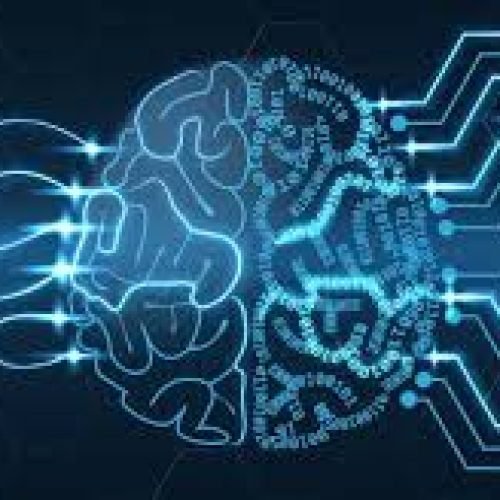Introduction
In today’s digital age, machine learning has become the backbone of various technologies, from recommendation systems to autonomous vehicles. But what many overlook is the sturdy infrastructure behind these cutting-edge applications. This article aims to provide an in-depth exploration of machine learning infrastructure, unraveling its complexities and shedding light on its crucial role in driving AI innovation.
Understanding Machine Learning Infrastructure
Machine learning infrastructure forms the foundation upon which AI applications thrive. It encompasses a sophisticated network of hardware, software, and processes designed to support the development, training, and deployment of machine learning models. At its core are three main components:
1. Data Storage and Management
The cornerstone of any machine learning project is data. However, handling vast amounts of data efficiently poses significant challenges. Machine learning infrastructure includes robust data storage solutions capable of handling petabytes of data while ensuring accessibility, security, and scalability. From traditional relational databases to distributed file systems like Hadoop Distributed File System (HDFS) and cloud-based storage solutions like Amazon S3, organizations have a myriad of options to choose from.
Data management is equally critical, encompassing practices for data cleaning, preprocessing, and labeling. Machine learning models are only as good as the data they’re trained on, making data quality paramount. Data governance frameworks ensure compliance with regulations and standards, while data pipelines streamline the flow of data from source to model.
2. Computing Resources
Machine learning models demand significant computational power for training and inference. Traditional central processing units (CPUs) have long been the workhorse of computing, but the rise of deep learning has ushered in the era of graphics processing units (GPUs) and specialized hardware accelerators like tensor processing units (TPUs). These hardware accelerators excel at parallel processing, making them ideal for running complex neural networks.
Scalability is a key consideration in machine learning infrastructure, as models grow in complexity and datasets expand in size. Cloud computing platforms offer elastic compute resources, allowing organizations to scale up or down based on demand. This flexibility ensures that infrastructure resources align with the needs of the machine learning workload, optimizing cost and performance.
3. Model Training and Deployment Frameworks
Model training and deployment frameworks provide the tools and libraries necessary for building, training, and deploying machine learning models. TensorFlow, developed by Google, and PyTorch, developed by Facebook, are two of the most popular open-source frameworks, offering extensive support for deep learning algorithms and flexible model development pipelines.
Model training involves feeding data into the model and adjusting its parameters to minimize error or maximize accuracy. This iterative process requires significant computational resources and may benefit from distributed training techniques that parallelize computation across multiple devices or nodes. Once trained, models are deployed into production environments where they can make predictions or classifications in real-time.
Challenges in Building Machine Learning Infrastructure
1. Scalability
As datasets grow in size and complexity, and user demand for AI-driven services increases, scalability becomes a critical concern. Organizations must design their infrastructure to handle spikes in workload without sacrificing performance or reliability. Scalability challenges extend beyond computational resources to include data storage, network bandwidth, and infrastructure management.
2. Data Quality and Management
The quality of training data directly impacts the performance of machine learning models. Poor-quality data can lead to biased or inaccurate predictions, undermining the effectiveness of AI systems. Data management practices, such as data cleaning, preprocessing, and augmentation, are essential for ensuring data quality. Additionally, organizations must implement robust data governance frameworks to maintain data integrity and compliance with regulatory requirements.
3. Resource Allocation and Optimization
Optimizing resource usage is crucial for maximizing the efficiency and cost-effectiveness of machine learning infrastructure. Organizations must carefully allocate computational resources to meet the demands of machine learning workloads while minimizing waste. Techniques such as workload profiling, resource scheduling, and performance tuning can help organizations optimize resource utilization and reduce operational costs.
Best Practices for Building Machine Learning Infrastructure
Overcoming the challenges of building machine learning infrastructure requires adopting best practices and leveraging industry standards. Some key best practices include:
1. Modular Design Approach
Breaking down machine learning infrastructure into modular components allows for greater flexibility and scalability. By decoupling different parts of the infrastructure, organizations can make changes or upgrades without disrupting the entire system. Modular design also facilitates reuse, as components can be repurposed for different projects or applications.
2. Automation and Orchestration
Automating routine tasks and orchestrating workflows can streamline the development, training, and deployment of machine learning models. Automation reduces manual intervention, minimizes errors, and accelerates time-to-market. Orchestration tools like Kubernetes provide a platform for managing containerized workloads, enabling organizations to deploy and scale machine learning applications with ease.
3. Monitoring and Debugging
Monitoring the performance and health of machine learning infrastructure is essential for identifying and resolving issues quickly. Monitoring tools provide real-time insights into system metrics, resource utilization, and performance bottlenecks, allowing organizations to detect anomalies and take corrective action. Debugging tools help diagnose and troubleshoot errors in machine learning workflows, ensuring the reliability and stability of AI systems.
Cloud-based vs. On-premise Solutions
Organizations have the option to deploy machine learning infrastructure on-premise or leverage cloud-based solutions offered by providers such as Amazon Web Services (AWS), Google Cloud Platform (GCP), and Microsoft Azure. Each approach has its advantages and considerations:
1. Cloud-based Solutions
Cloud-based solutions offer scalability, flexibility, and cost-effectiveness. Cloud providers offer a range of machine learning services, from managed infrastructure to pre-trained models and APIs. Organizations can leverage cloud computing resources on-demand, paying only for what they use and avoiding the upfront costs of purchasing and maintaining hardware.
Cloud-based solutions also provide built-in security features and compliance certifications, making them suitable for organizations with strict security and regulatory requirements. Additionally, cloud providers offer a wide range of machine learning tools and services, enabling organizations to accelerate the development and deployment of AI applications.
2. On-premise Setups
On-premise setups provide greater control over data privacy and security. Organizations can deploy machine learning infrastructure within their own data centers or private cloud environments, ensuring that sensitive data remains within their control. On-premise setups also offer predictable performance and cost structures, with no reliance on third-party providers or internet connectivity.
However, on-premise setups require upfront capital investment in hardware, software, and infrastructure maintenance. Organizations must also manage and support the infrastructure internally, including tasks such as hardware provisioning, software updates, and security patching. On-premise setups may be more suitable for organizations with specialized hardware requirements, regulatory constraints, or data sovereignty concerns.
Case Studies
Several industry leaders have successfully implemented robust machine learning infrastructure, serving as models for best practices and lessons learned. By examining these case studies, organizations can gain valuable insights into building scalable, reliable, and cost-effective AI infrastructure.
1. Google’s Tensor Flow
Google’s Tensor Flow platform provides a comprehensive ecosystem for developing, training, and deploying machine learning models at scale. Built on top of Google’s infrastructure, Tensor Flow offers distributed training capabilities, optimized performance for GPUs and TPUs, and integration with popular deployment platforms like Kubernetes.
Tensor Flow has been instrumental in powering a wide range of Google products and services, from image recognition to natural language processing. By leveraging Tensor Flow’s flexibility and scalability, organizations can build and deploy custom machine learning models tailored to their specific requirements.
2. Amazon’s AWS
Amazon Web Services (AWS) offers a suite of machine learning services designed to simplify the development and deployment of AI applications. AWS SageMaker provides a fully managed environment for building, training, and deploying machine learning models, with support for popular frameworks like TensorFlow and PyTorch.
AWS’s cloud infrastructure enables organizations to scale compute resources on-demand, ensuring that infrastructure resources align with the demands of machine learning workloads. With built-in security features, compliance certifications, and a global network of data centers, AWS provides a secure and reliable platform for running AI applications at scale.
3. Facebook’s PyTorch
Facebook’s PyTorch framework has gained popularity for its ease of use, flexibility, and performance. PyTorch’s dynamic computation graph and eager execution model make it well-suited for rapid prototyping and experimentation, while its integration with Facebook’s AI research platform enables cutting-edge research and development.
PyTorch has been instrumental in advancing the field of deep learning, powering a wide range of AI applications across industries. By leveraging PyTorch’s rich ecosystem of libraries and tools, organizations can accelerate the development and deployment of machine learning models, driving innovation and impact.
Future Trends
Looking ahead, several trends are poised to shape the future of machine learning infrastructure, driving innovation and accelerating AI adoption:
1. Advancements in Technology
Advancements in hardware technology, such as faster processors, higher memory bandwidth, and specialized hardware accelerators, will enable more complex and efficient machine learning models. These advancements will empower organizations to tackle new challenges and unlock new opportunities in AI research and development.
2. Distributed Computing
Technologies like federated learning and edge computing will enable distributed model training and inference across a network of devices, enabling real-time and privacy-preserving AI applications. Federated learning allows models to be trained directly on user devices without centralizing data, preserving user privacy and reducing bandwidth requirements.
3. Automation and Orchestration
Automation and orchestration will play an increasingly important role in managing and scaling machine learning infrastructure. Technologies like Kubernetes and Apache Airflow provide powerful tools for automating workflows, orchestrating containerized applications, and managing complex machine learning pipelines
Conclusion
Machine learning infrastructure is the unsung hero behind AI innovation. By providing the foundation for developing, training, and deploying machine learning models, infrastructure enables organizations to harness the power of AI to solve complex problems and drive business value. By understanding the key components, overcoming challenges, and following best practices, organizations can build scalable, reliable, and future-proof machine learning infrastructure, paving the way for continued AI innovation and impact.







